Not every room is blessed with sunlight, but that doesn’t mean it has to be devoid of greenery. Whether you're decorating an internal office, a basement flat, or a windowless bathroom, there are several houseplants that can adapt to low-light conditions and still thrive. These plants not only add visual appeal and texture but can also improve air quality and bring a sense of calm to your space. With the right selection and a little care, even the darkest corners of your home can come to life. Here are nine resilient indoor plants perfect for spaces without natural sunlight.
Best low maintenance plants for windowless indoor areas
Philodendron

Philodendrons are admired for their adaptability and the wide range of sizes they come in. Many species do well in low light. You can train climbing varieties onto a totem for vertical interest or choose compact types that clump nicely in small corners. These plants require well-draining soil, and it’s important to note that they’re toxic to pets, so place them safely.
Snake Plant

Snake plant, also known as dracaena, handles artificial lighting exceptionally well. Many indoor spaces have overhead lights on for around eight hours a day, which is often enough for snake plant growth. It is also drought tolerant, making it one of the easiest options for beginners or those who travel frequently. The plant prefers well-drained soil and can grow to various heights depending on the variety.
ZZ Plant
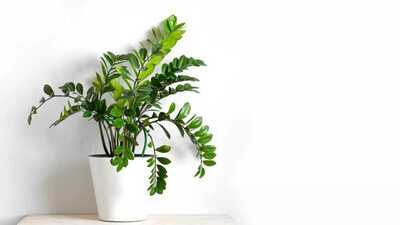
Zamioculcas zamiifolia, commonly called ZZ plant, is truly low maintenance. It performs admirably with minimal light and sparse watering. In fact, some people manage to keep ZZ plant specimens alive even in what appears to be completely dark rooms. Growth might be slower, but the plant still maintains its lush, glossy leaves with very little care.
Pothos
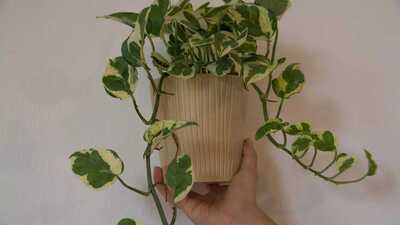
Pothos is a fast-growing trailing green with glossy, heart-shaped leaves. It tolerates low light, infrequent watering, and minimal feeding. Its vines make it great for hanging or draping over shelves or walls, and you can get creative, for example, weaving the stems around a small photo to make a living frame. It prefers well-drained potting soil and indirect lighting, though it can manage in dimmer conditions.
Bromeliad
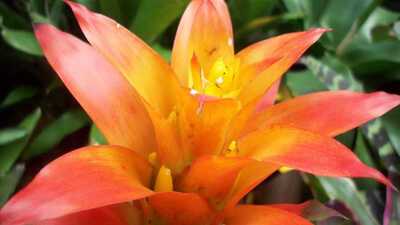
Bromeliads such as Vriesea or Guzmania bring a splash of tropical drama even in dim environments. In their native habitats, they often grow under thick canopy cover, so they’re well adapted to low-light conditions. As long as they have well-drained soil and moderate indirect lighting, they can brighten a bathroom or office with their vivid blooms.
Peace Lily
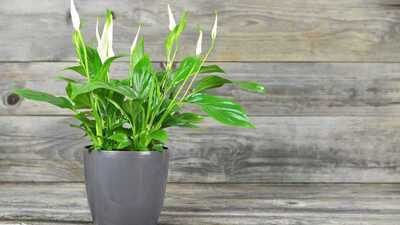
Peace lily is known for its graceful white flowers and glossy leaves that thrive under low light. Many of these lilies manage well with only standard office lighting, particularly if they are introduced when young and grown to maturity in those conditions. They prefer shade or partial light and consistently moist soil. Like philodendron, peace lilies are toxic to pets, so caution is advised.
Monstera
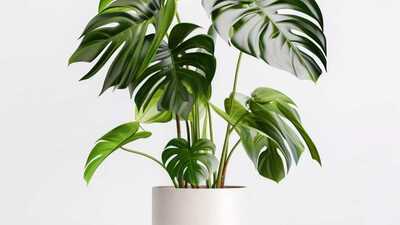
Monstera deliciosa, often called the Swiss cheese plant, can surprise you by adapting to low-light spaces. To improve their growth where windows are absent, compact grow lights can be hung like lamps to provide the needed glow. With proper support and lighting, these dramatic foliage makers can thrive even in windowless rooms.
Spider Plant
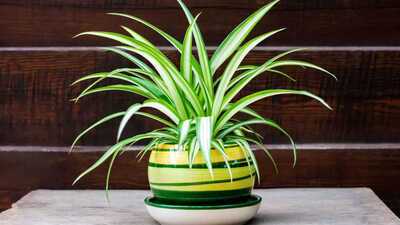
Spider plant is known for its arching leaves and dangling baby plantlets. It adapts well to lower light levels and can flourish in rooms lit only by fluorescent bulbs. It makes an attractive hanging option or desk plant and helps liven up a dull corner. All it needs is well-drained soil and occasional trimming to prevent crowding.
Chinese Evergreen
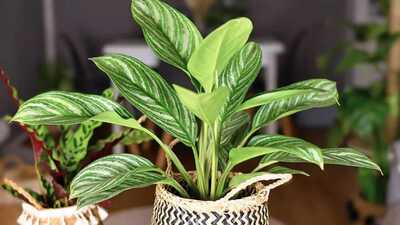
Chinese evergreen, or Aglaonema, is a leafy option celebrated for its decorative foliage and resilience. It grows steadily even in artificial or low-light conditions and is known for being exceptionally durable. Grow lights can help it develop more vibrant colouring in truly dark rooms, but it is well-suited to low natural light environments as is.
Although these nine varieties tolerate or even thrive in low-light settings, they can benefit from supplemental lighting. Fluorescent or LED grow lights, timed for around 12 to 14 hours daily, help them maintain steady, healthy growth. Choose lights designed for plant use to ensure they get the right spectrum.
Bringing greenery into windowless areas isn’t just cosmetic. Even minimal houseplants can reduce stress, improve focus and mood, and create a sense of comfort and well-being in otherwise sterile environments. A few well-chosen, easy-care plants can transform your office, basement, or internal room into a more welcoming, peaceful space.
Also Read: 7 smart ways to use hydrogen peroxide for healthier plants: Treat fungus, root rot, and more
Best low maintenance plants for windowless indoor areas
Philodendron
Philodendrons are admired for their adaptability and the wide range of sizes they come in. Many species do well in low light. You can train climbing varieties onto a totem for vertical interest or choose compact types that clump nicely in small corners. These plants require well-draining soil, and it’s important to note that they’re toxic to pets, so place them safely.
Snake Plant

Snake plant, also known as dracaena, handles artificial lighting exceptionally well. Many indoor spaces have overhead lights on for around eight hours a day, which is often enough for snake plant growth. It is also drought tolerant, making it one of the easiest options for beginners or those who travel frequently. The plant prefers well-drained soil and can grow to various heights depending on the variety.
ZZ Plant
Zamioculcas zamiifolia, commonly called ZZ plant, is truly low maintenance. It performs admirably with minimal light and sparse watering. In fact, some people manage to keep ZZ plant specimens alive even in what appears to be completely dark rooms. Growth might be slower, but the plant still maintains its lush, glossy leaves with very little care.
Pothos
Pothos is a fast-growing trailing green with glossy, heart-shaped leaves. It tolerates low light, infrequent watering, and minimal feeding. Its vines make it great for hanging or draping over shelves or walls, and you can get creative, for example, weaving the stems around a small photo to make a living frame. It prefers well-drained potting soil and indirect lighting, though it can manage in dimmer conditions.
Bromeliad
Bromeliads such as Vriesea or Guzmania bring a splash of tropical drama even in dim environments. In their native habitats, they often grow under thick canopy cover, so they’re well adapted to low-light conditions. As long as they have well-drained soil and moderate indirect lighting, they can brighten a bathroom or office with their vivid blooms.
Peace Lily
Peace lily is known for its graceful white flowers and glossy leaves that thrive under low light. Many of these lilies manage well with only standard office lighting, particularly if they are introduced when young and grown to maturity in those conditions. They prefer shade or partial light and consistently moist soil. Like philodendron, peace lilies are toxic to pets, so caution is advised.
Monstera
Monstera deliciosa, often called the Swiss cheese plant, can surprise you by adapting to low-light spaces. To improve their growth where windows are absent, compact grow lights can be hung like lamps to provide the needed glow. With proper support and lighting, these dramatic foliage makers can thrive even in windowless rooms.
Spider Plant
Spider plant is known for its arching leaves and dangling baby plantlets. It adapts well to lower light levels and can flourish in rooms lit only by fluorescent bulbs. It makes an attractive hanging option or desk plant and helps liven up a dull corner. All it needs is well-drained soil and occasional trimming to prevent crowding.
Chinese Evergreen
Chinese evergreen, or Aglaonema, is a leafy option celebrated for its decorative foliage and resilience. It grows steadily even in artificial or low-light conditions and is known for being exceptionally durable. Grow lights can help it develop more vibrant colouring in truly dark rooms, but it is well-suited to low natural light environments as is.
Although these nine varieties tolerate or even thrive in low-light settings, they can benefit from supplemental lighting. Fluorescent or LED grow lights, timed for around 12 to 14 hours daily, help them maintain steady, healthy growth. Choose lights designed for plant use to ensure they get the right spectrum.
Bringing greenery into windowless areas isn’t just cosmetic. Even minimal houseplants can reduce stress, improve focus and mood, and create a sense of comfort and well-being in otherwise sterile environments. A few well-chosen, easy-care plants can transform your office, basement, or internal room into a more welcoming, peaceful space.
Also Read: 7 smart ways to use hydrogen peroxide for healthier plants: Treat fungus, root rot, and more
You may also like

Indore: Rain Should Not Hinder Metro Work, Instructs Managing Director Of MPMRCL

EastEnders 'drops huge hint' character will return from prison - and it's not Ben

Indore: IDA Earns ₹580 Crore In 4 Months, IMC Battles Financial Woes; Green Light For Bada Ganpati Flyover

iCarly fans 'can't wait' as 'hilarious' trailer drops for star's new Netflix romcom

Alexander Isak's camp hope Newcastle 'buckle' as they try to force Liverpool transfer





